Making shavings
I’ve been learning to turn wood. It is a wonderful craft skill that is easy to learn but hard to master. That's the appeal.
You mount a piece of wood to the lathe and use sharp tools to shape it into something useful. This seems straightforward in principle. But you quickly learn what wood grain does and does not want to do as it spins against your tool edge a thousand times a minute.
You learn that soft woods will cut easily but roughly while hard woods make you work, but will reward you for your time. The effort required to hollow a large bowl becomes apparent. The vast world of sanding and finishing strategies opens up. The challenge of duplicating a piece that’s part of a set reveals itself.
You begin to notice all the turned wooden objects in the world. Bowls and cups, baseball bats and staircase balusters, candlesticks and pepper grinders, salt cellars and vases. You look to see if you can tell if a machine or a person made each one. Each gets added to a mental list of future projects you’d like to try your hand at.


The Craftsman Woodturner by Peter Child. Hollowing a walnut salad bowl.
While immersing myself in this new hobby, I came across a small note in the introductory chapters of a book my Dad gave me on the topic.
“When you are learning to turn, don’t be concerned with the finished product. Just make shavings. The product of your work is the skills you’re learning, not the object itself.”
This has stuck with me. It’s a good mantra to remember when a stray gouge damages a piece, or a particularly rough patch of grain won’t yield, or a project doesn’t turn out as you’d hoped.
Make shavings. Keep at it. Relax into the hum of the machine and the feel of the tool as it meets the wood. Trust the process and embrace the humility of the beginner’s mindset. Put in your 10,000 hours.

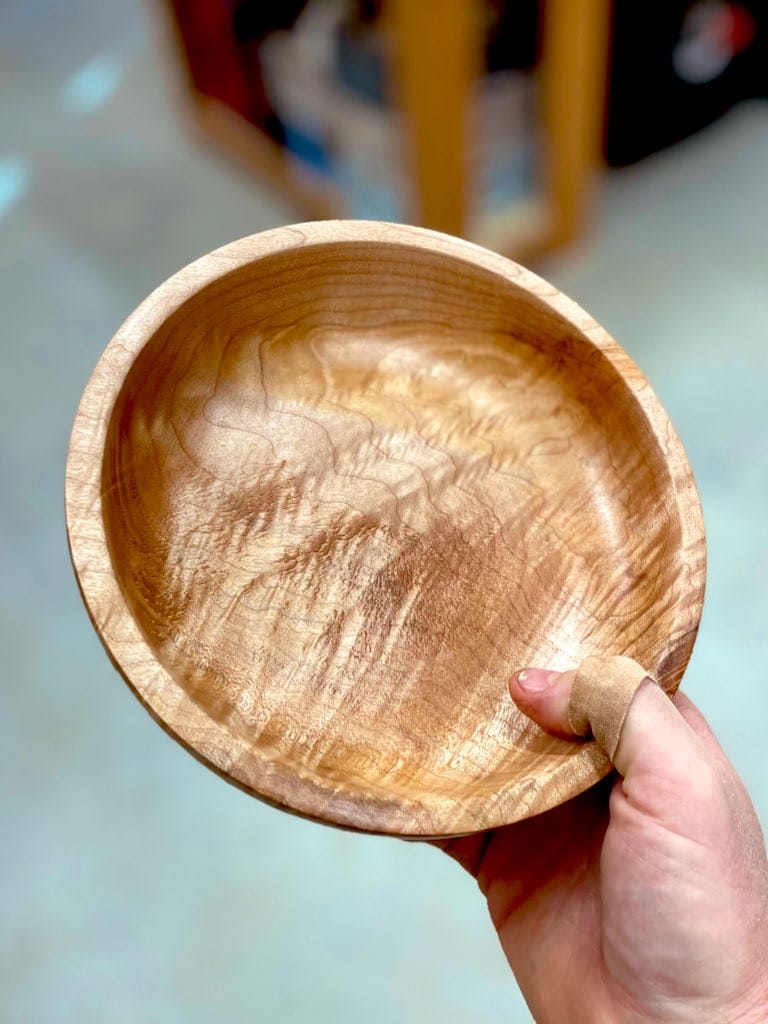

The first bowl I made (holding Mancala beads). A shallow bowl from curly Maple. A valet tray from Cherry.
The path toward woodworking began early for me. My Dad is a cabinet and furniture maker. I started working in his shop when I was 8 or 9 years old. He would pay me $10 to clean up the shop on the weekend, which took a couple of hours. I would brush off all the machines and surfaces, clean out the dust collectors, sweep the floors, and vacuum up any corners I couldn’t get with the broom. I'd put back in its right place anything that had been left out.
I graduated to other small jobs. Dad would get a load of reclaimed boards and I’d be responsible for pulling out any staples, screws or nails embedded in them. This was important as a hidden nail could damage a machine. I took it seriously. Dad would inspect the work when I was done.
Other times we’d spend a morning stacking and stickering freshly milled wood. This involved placing small sticks between the layers so that air could get in and around each board so it would dry evenly and avoid warping. You then had to wait several years for the wood to fully dry before using it.
The patience required for these timelines was impressive to my young mind. Even now he'll pull out a piece of wood and remark that he collected it 40 years ago, and only now knows what to make with it. This still impresses me.
He built everything in our home that was made of wood. The kitchen cabinets, counters and table. The fireplace mantle and coffee table in the living room. The beds and side tables. The desk and office cabinets. One way to save money when you have 5 kids is to build your own furniture, I suppose.
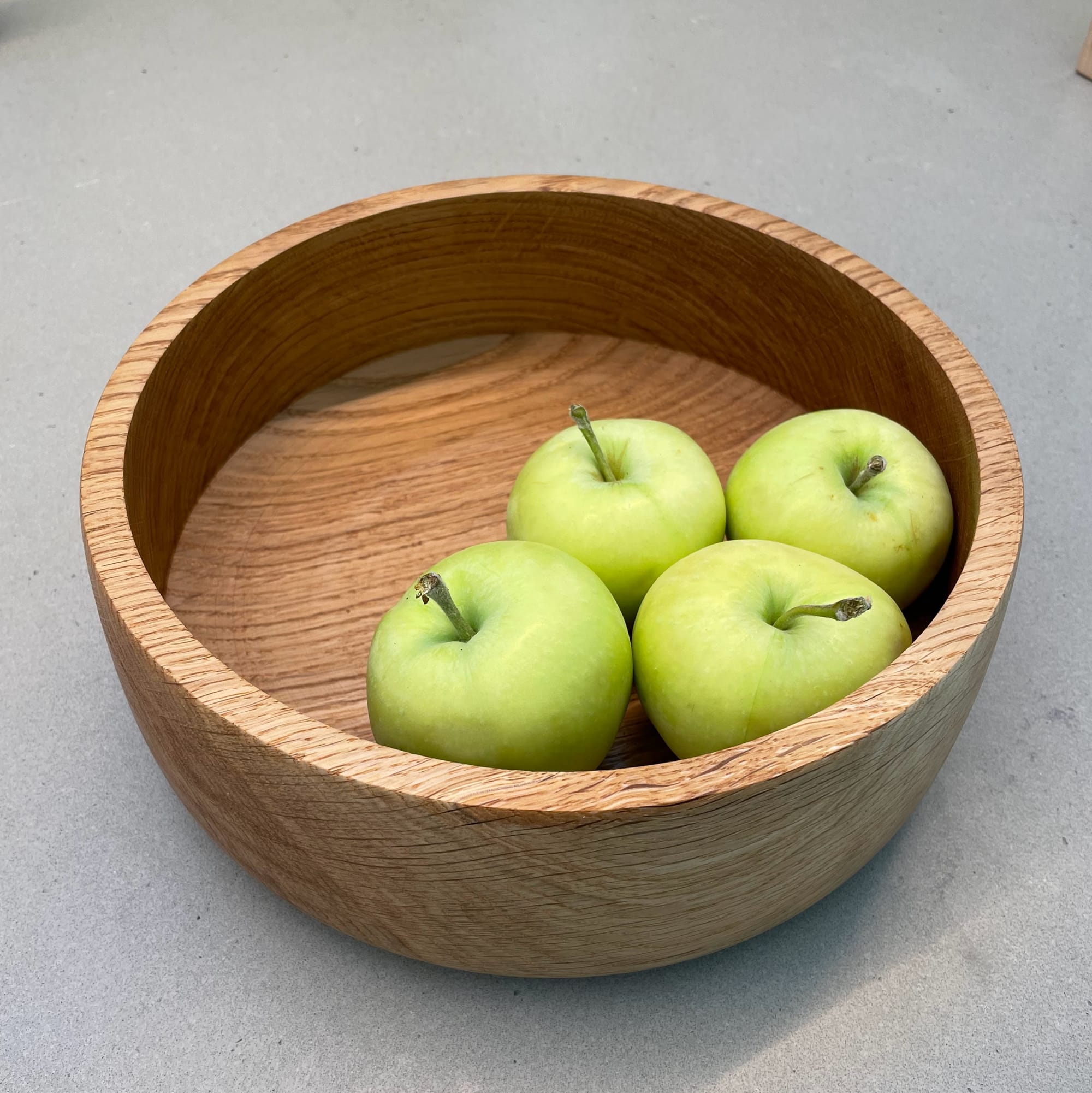

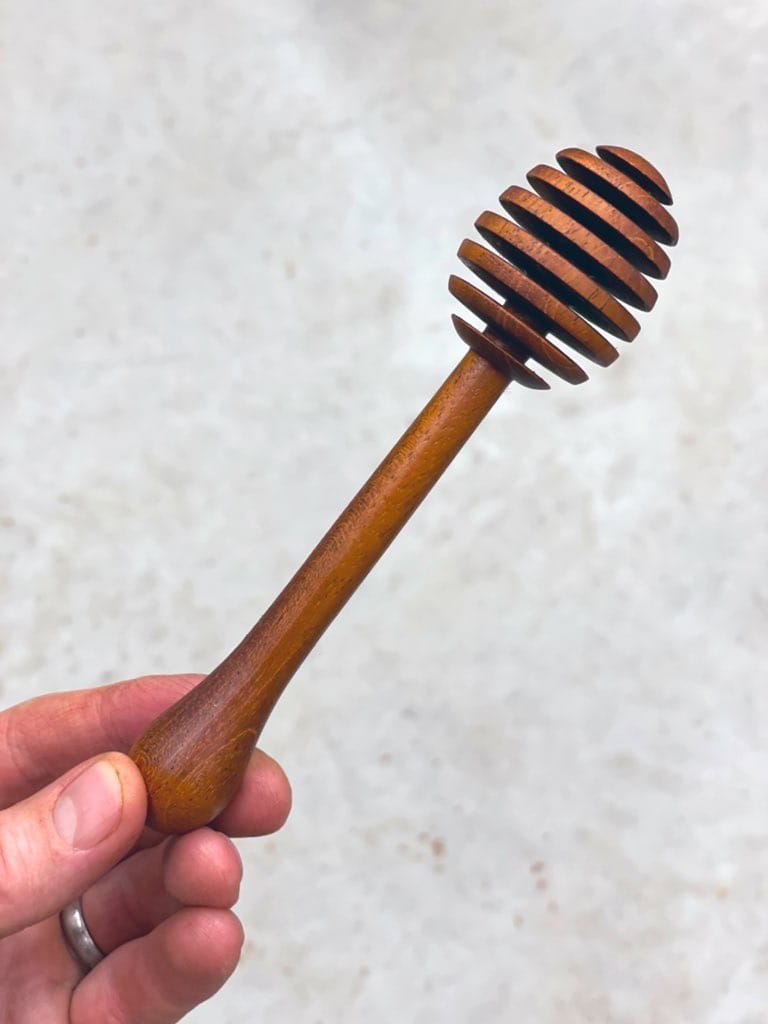
A pair of fruit bowls from oak and walnut and a honey dipper from cherry.
I left home at 18, lost access to a shop, and forgot about woodworking for a while. Eventually as my wife and I started settling down in our thirties I got the urge to build things for our apartment. A bench for the entry. A box for the hats and mittens and boots our two little kids started proliferating. I started collecting clamps and chisels.
By the time we built our house, I knew I wanted my own shop. We built a 600 square foot outbuilding for the purpose. Over the last four years I've got it put together as I'd like, using my Dad's shop as a template for what's essential. Table saw, bandsaw, jointer, thickness planer, drill press, belt sander, router, lathe. Workbench and toolbench, hand tools. Many clamps. Dust collection. A good stereo.
With these things you can spend a lifetime making shavings.
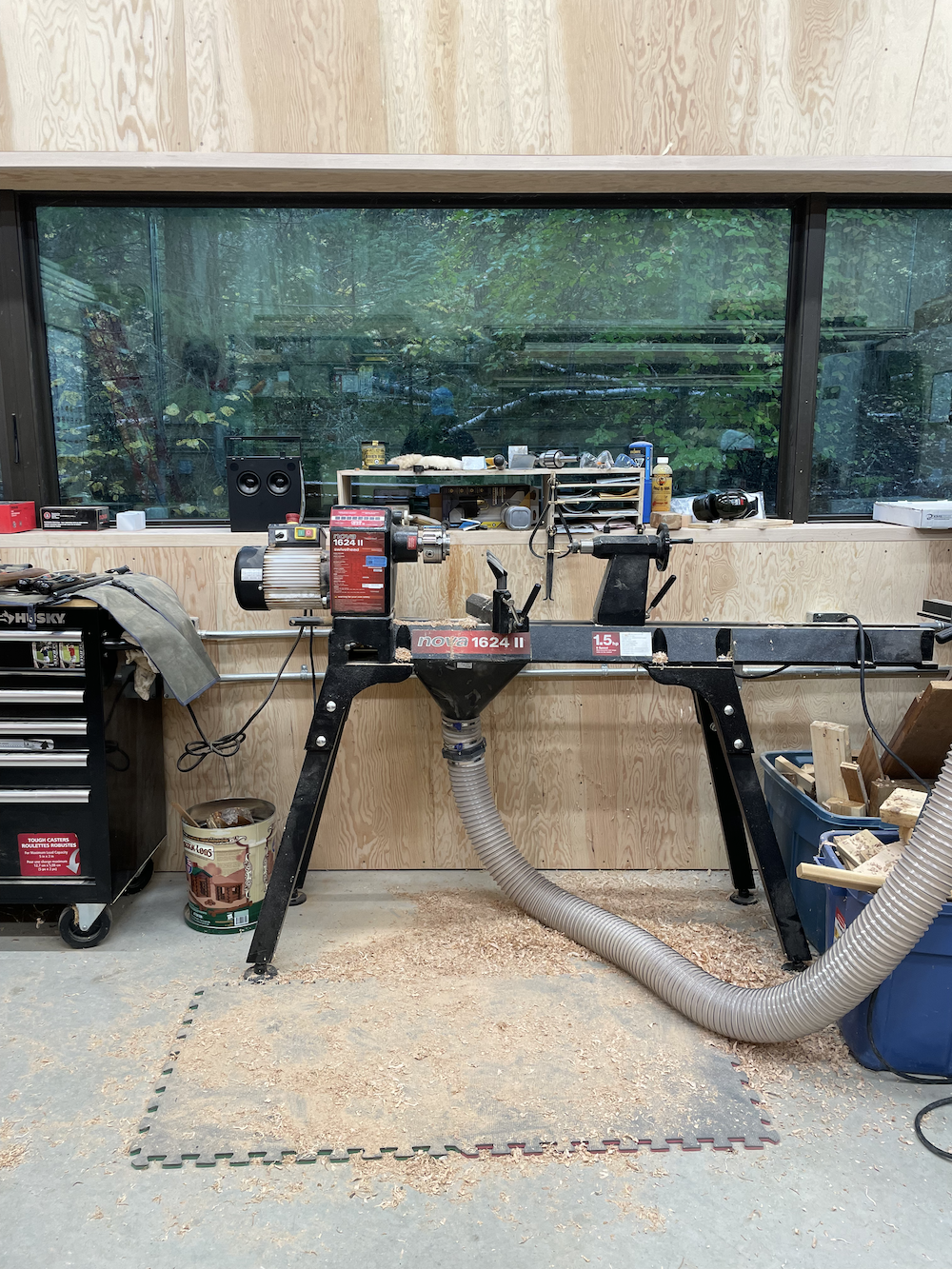
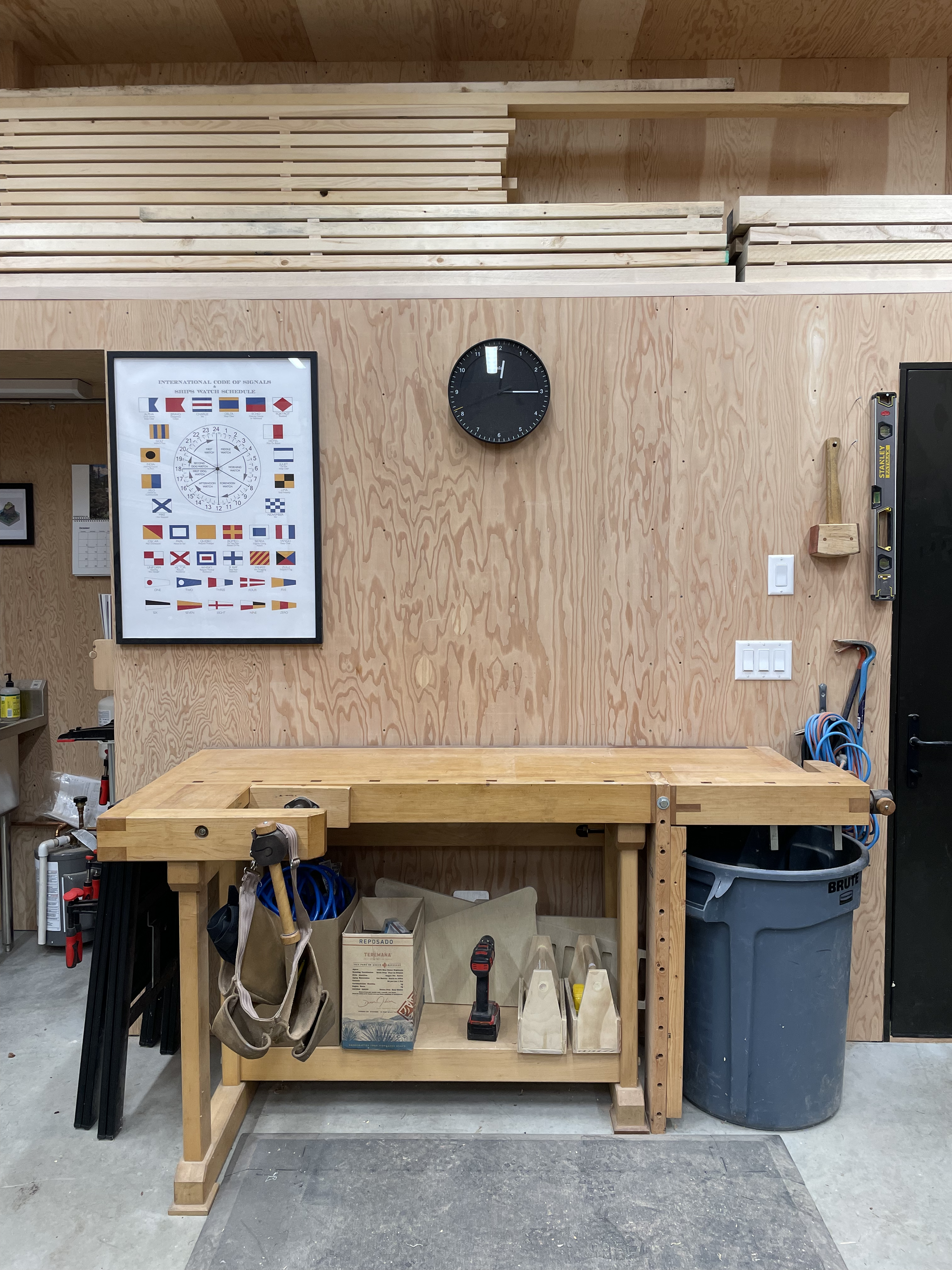

My lathe, workbench and table saw in my shop. The lathe is an excellent Teknatool Nova II from New Zealand. The workbench is cobbled together from leftover bits from Dad's student apprentices. I built the cabinet saw table this summer.
Our kids are now the age I was when I first started learning. They love to come to the shop with me, pick up a piece of wood, and decide what to make with it. A toolbox and hammer. A honey dipper. A baseball bat. A car. They haven't shown much interest in cleaning up, though they do like using the vacuum on the sawdust that accumulates everywhere.
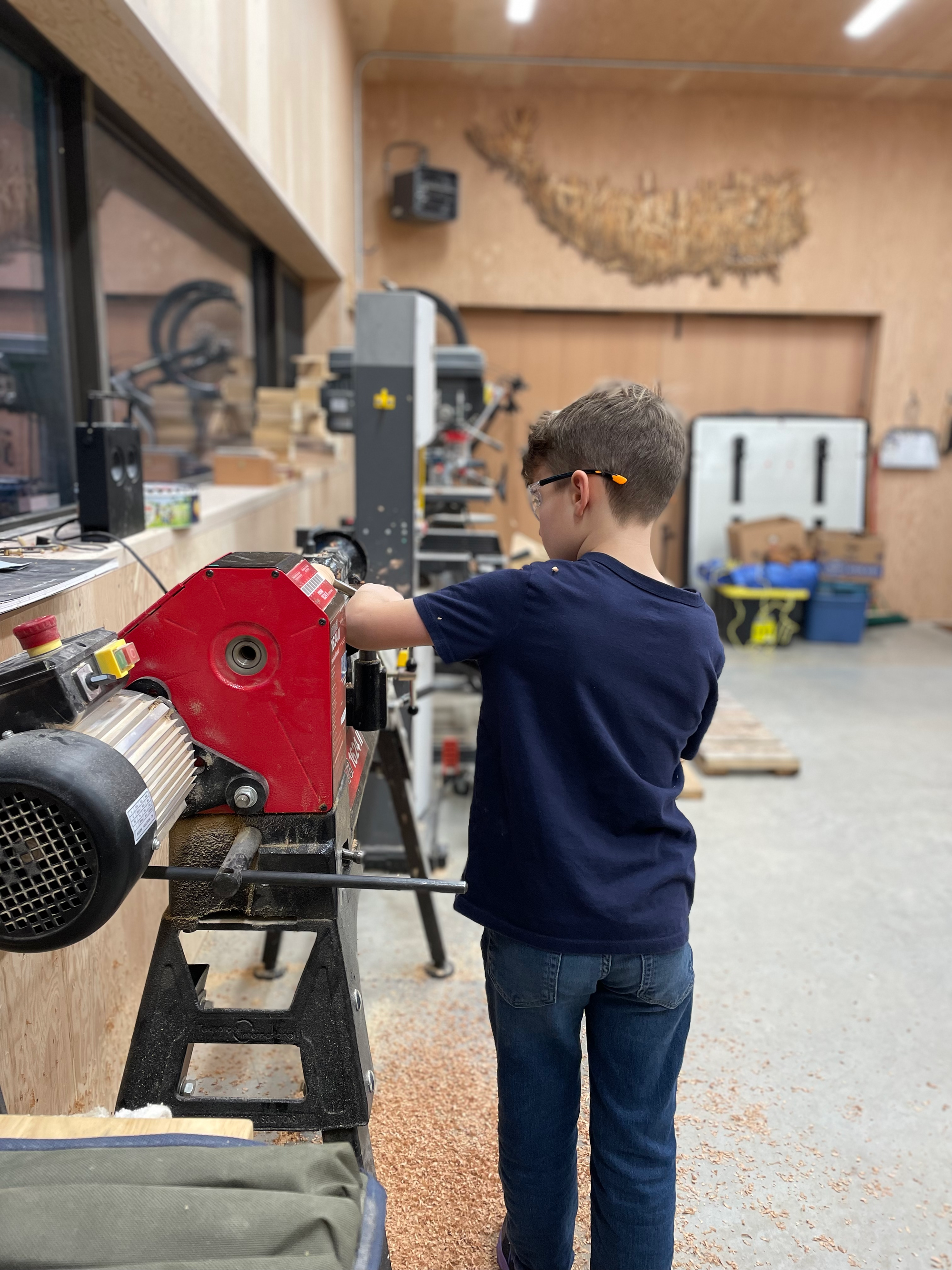

My boys learning to turn.
I continue to learn from my Dad. He'll bring over a tool he thinks I need, dug up from a corner of his shop. It inevitably turns out to be useful months later. I'll call him up when working on a project and ask how he'd approach something – what joint is going to be strongest for this purpose? How deep should these mortises be?
When we built a dining table together for our house, he showed me how to fix a surface I'd accidentally damaged by wetting it and gently ironing it. Steaming the wood fibres allows them to swell back into shape. A bit of sanding and the damage was repaired. Magic.
I built a table to surround my cabinet saw this summer for outfeed and storage. After assessing it for a few minutes, Dad told me it was the most beautiful table saw table he'd seen. “That means you probably spent a bit too much time on it,” he joked with a nudge to my ribs.



There's something about the practice of woodworking that has given me a sense of purpose and pleasure that I haven't been able to find elsewhere. I feel better after a couple hours of undisturbed making in the shop than at any other time.
Using all your senses and embodied skill to make something for yourself or other people. Slowly bringing something into existence using your hands and natural materials. Making and correcting your own inevitable mistakes and oversights. Paying attention and learning from each new effort. Passing wisdom on from generation to generation. Making shavings.
At dawn when rowboats drum on the dock
and every door in the breathing house bumps softly
as if someone were leaving quietly, I wonder
if something in us is made of wood,
maybe not quite the heart, knocking softly,
or maybe not made of it, but made for its call.
Of all the elements, it is happiest in our houses.
It will sit with us, eat with us, lie down
and hold our books, themselves a rustling woods,
bearing our floors and roofs without weariness,
for unlike us it does not resent its faithfulness
or question why, for what, how long?
Its branchings have slowed the invisible feelings of light
into vortices smooth for our hands,
so that every fine-grained handle and page and beam
is a wood-word, a standing wave:
years that never pass, vastness never empty,
speed so great it cannot be told from peace.
– Essay on Wood, James Richardson